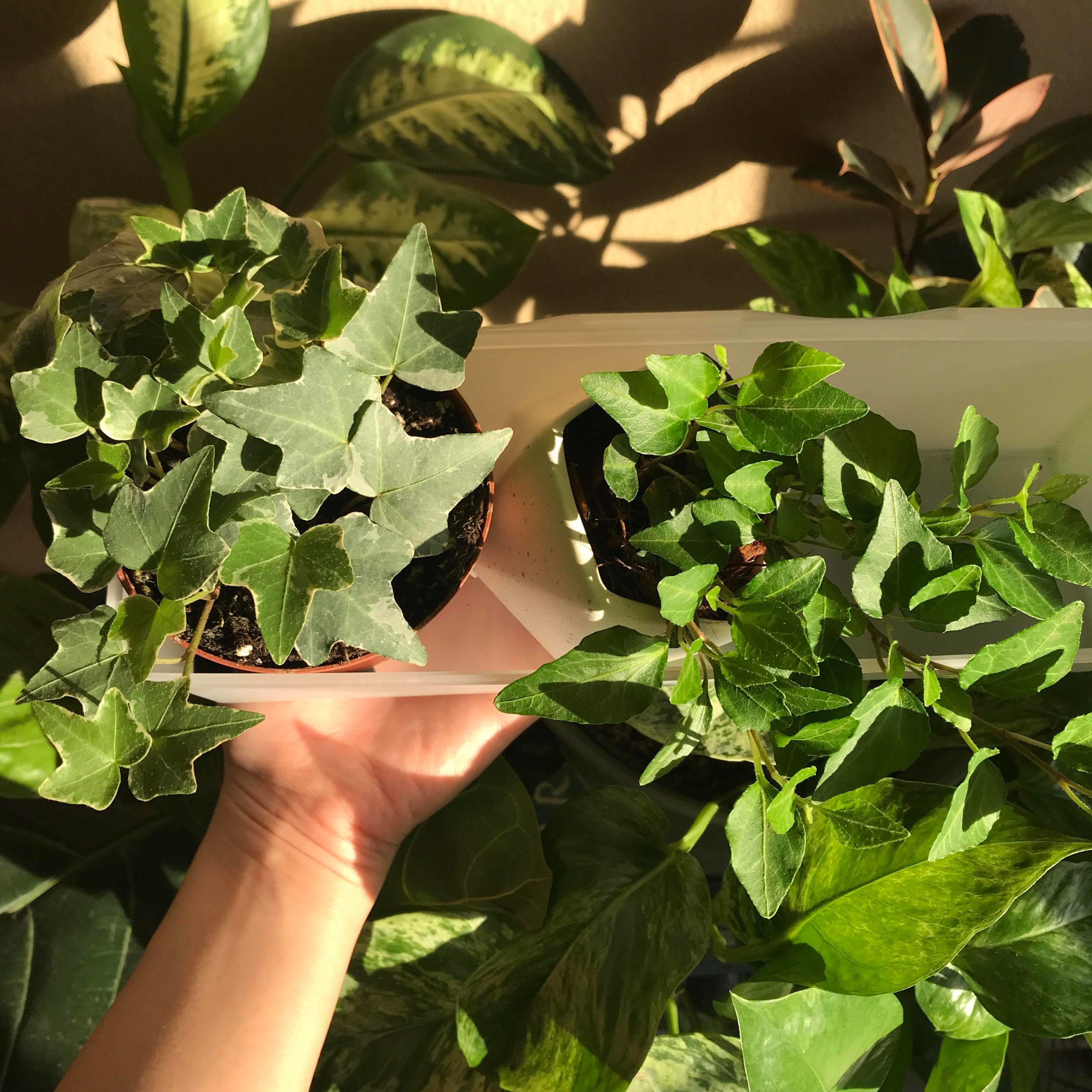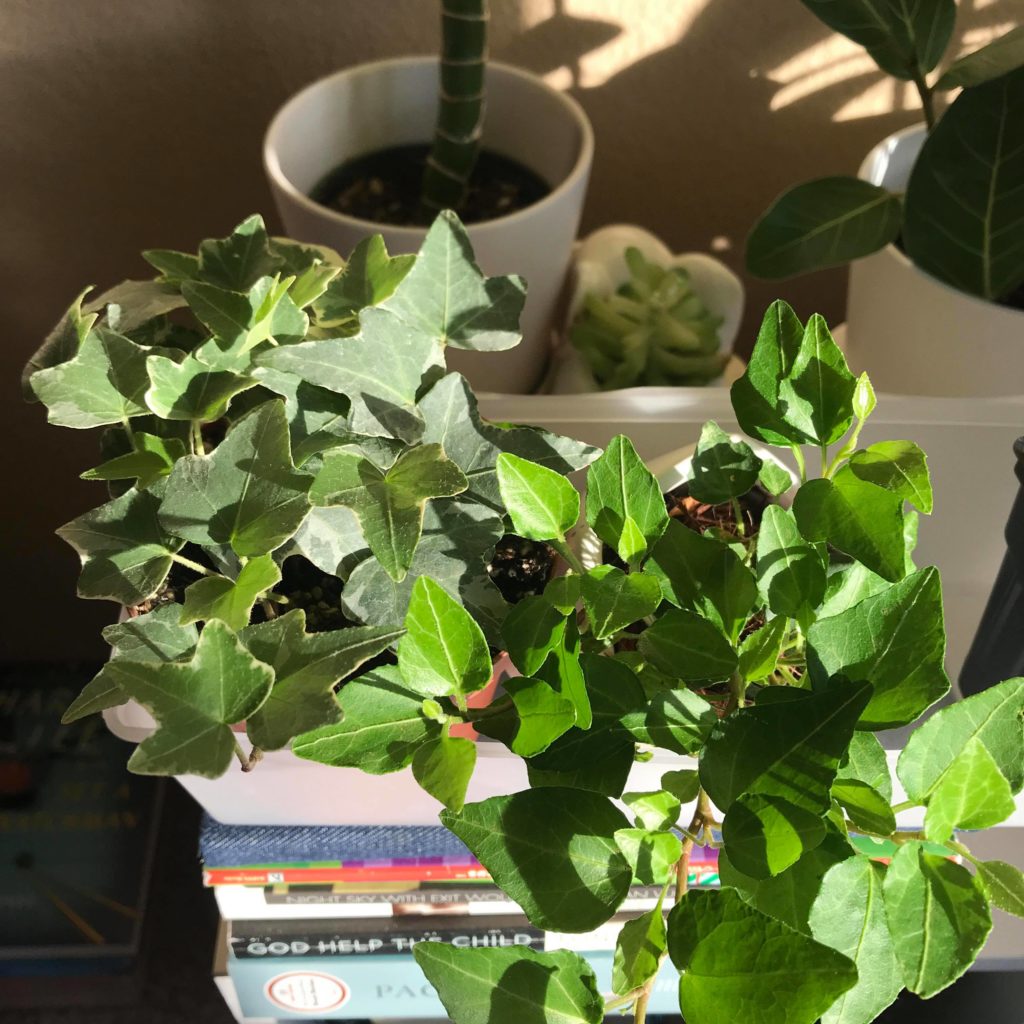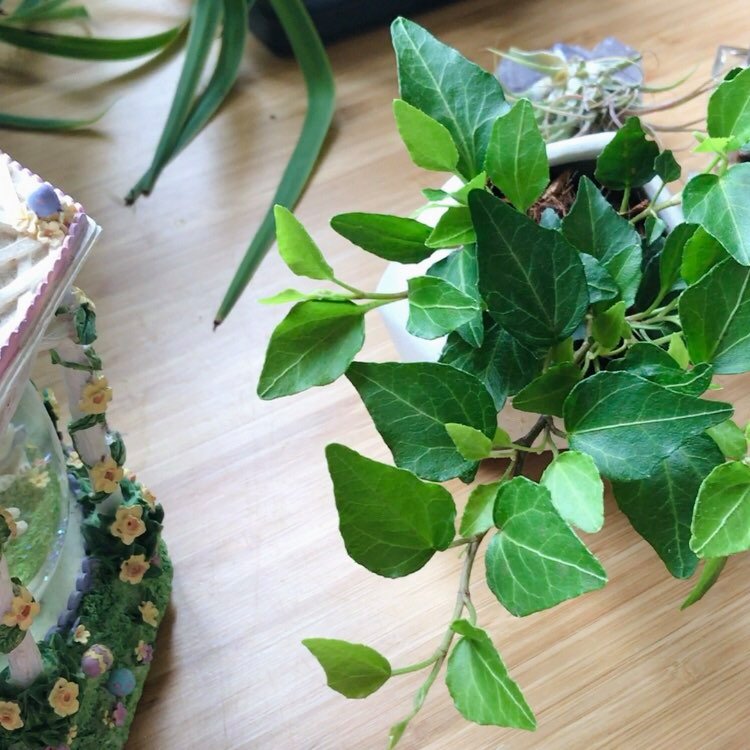Ivy is the definitive cottagecore trailing plant, even if it’s generally underrated in a world where tropical plants get most of the fanfare. After giving “ivy” a few listens (yes, I’m that Swiftie friend), I ended up picking two ivy plants as my first plant purchases of the year, a run-of-the-mill green hedera helix from The Home Depot and a glacier variety from Grocery Outlet. Because the ivy plant often gets overlooked, it’s usually affordable and ubiquitous in nurseries and grocery stores.
Admittedly, I’ve been tentative about bringing ivy back into my houseplant collection. Why break my own heart with ivy again when I have the superior pothos, aka the devil’s ivy? A while back, a brief Walmart trip ended with me bringing home a 3-inch ivy plant that inevitably died because I alternated between long periods of ignoring it and overwatering it. But quarantine (and a certain Taylor Swift song) renewed my love for whimsical cottagecore plants that look like they belong in Bridgerton or The Hobbit. It is what it is.
Now that it’s my second time around the rodeo, I’ve got a more solid plan for how to care for my ivy plants. Here’s my course of action for my new hedera helix babies — perhaps they’ll spare you my heartbreak, too!
What to Know About the Ivy Plant
Ivy is native to Europe, western Asia, and northern Africa. You will probably recognize what English ivy looks like, as it’s the most commonly found variety in nurseries. Its leathery leaves have three or five lobes, and they trail down woody stems. When left to its own devices, ivy grows on forest floors and trees. It has a very romantic look to it when its foliage covers buildings, but it can actually contribute to rot and paint damage. And as an invasive evergreen, it grows pretty expansively, capable of spreading across 100 feet.
How to Care for the Ivy Plant
Ivy isn’t particularly a picky plant, but keeping these general guidelines in mind will help you give your ivy high-quality care.
- Brightness: Ivy plants love bright, indirect sunlight. You can scorch the leaves with too much light, so they do prefer partial shade if left outdoors. One of my past mistakes was not giving my plant enough sunlight. Ivy can get spindly and leggy if you don’t give it enough light to produce energy. Right now, my pair of ivy plants sit by a northeast facing window that gets plenty of light throughout the day. Just keep in mind that while ivies appreciate sunlight, they don’t love extremely hot temperatures. The same goes for extremely cold temperatures — while most ivy plants can tolerate frost, they do best in room temperature.
- Water Requirements: Ivy appreciates humidity, but it’s not a big fan of sitting in water. It prefers to stay on the dry side, so water your plant when the top inch dries out. In the winter, it’s a good idea to cut back on watering even more, only doing so when the top half of the planter dries out. (One of my past blunders was absolutely drenching mine each week. Don’t be me unless you enjoy pain.)
- Fertilizing: During the spring and summer, you can bring out your nitrogen-rich slow-release fertilizer to give your ivy a little TLC.
- Pest Control: If you leave ivy in a warm room and don’t water it enough, it can become susceptible to red spider mites. Give your plant a thorough hosing and apply diluted hydrogen peroxide or neem oil onto the impacted surface.
Whether you train it to climb or hang it on a macrame, ivy is quite beautiful and understated, the perfect budget-friendly plant to create a rustic ambiance!


